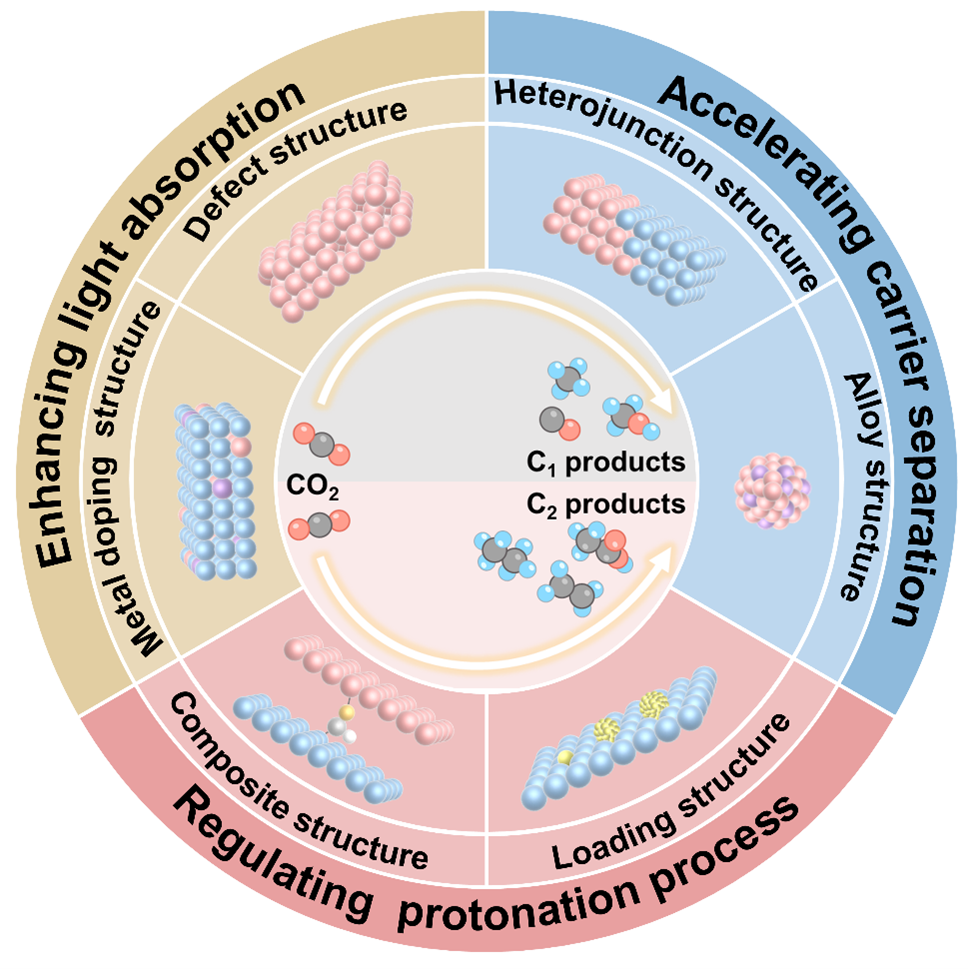《EES Solar》: How to Design Active Sites for Tailoring C1 and C2 Products of CO2 Photoreduction
Peijin Du,+ Suning Zhang,+ Jinyu Ding,+ Dongpo He, Qinyuan Hu, Xingchen Jiao,* and Yi Xie*
In photocatalytic CO2 reduction, it generally involves three fundamental stages: the light absorption , the charge carriers separation, and the redox reactions occurring on the surface. Adjusting these processes to optimize the activity and selectivity of CO2 photoreduction for C1 and C2 products has proven to be an effective strategy. In this review, we summarize the design of active sites through various structural modifications, including defect structure, metal doping structure, heterojunction structure, alloy structure, loading structure, and composite structure, to tailor the product selectivity and activity of CO2 photoreduction. Additionally, we provide a concise overview and outlooks on strategies for stabilizing active sites, constructing bio-inorganic systems, and elucidating catalytic mechanisms.

Figure 1. Schematic illustrations of various strategies for active site designing C1 and C2 products during CO2 photoreduction process.
